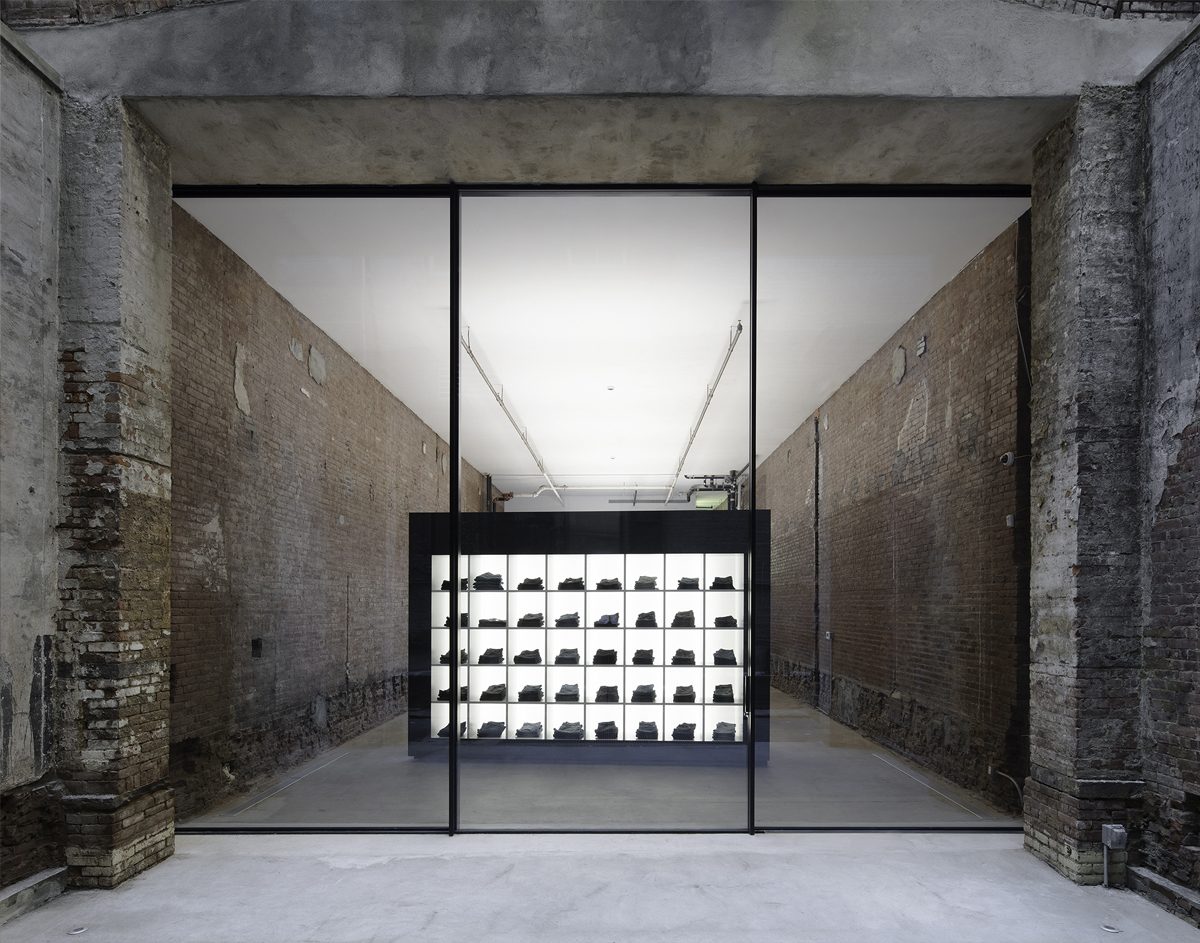
Founded in 2009 by Chris Leba, R13 is a luxurious yet rugged fashion brand that is inspired by America’s history and culture of rebellion.
Despite its success in establishing itself as a highly regarded brand, R13 hadn’t opened a physical retail space up until 2019, a decade after its initial 2009 launch. Among many reasons, Leba attributes one as being the lengthy and painstaking search for the perfect store location.
“I really wanted to create an experience for the shopper who is walking in from off the street,” explained Leba. “Almost anywhere you go today, the shopping experience is pretty much the same, and we wanted this to be something else, something different.”
After securing ground-level space in addition to an office and studio at 34 Howard Street in SoHo, New York City, R13’s flagship store had finally opened to the delight of many.
Originally from Vietnam, Leba moved to the US during the 80s where while living in New York, came to admire the retail spaces of brands such as Comme des Garçons and Helmut Lang.
“Those stores were super-cool, they were destinations,” said Leba. “I took elements from those stores, like the bare ceilings and concrete, and put them in a blender with some of my favourite architects, like John Pawson. I just couldn’t bring myself to put up a few racks and decorate with flowers, you know?”
The design of the store was realized and actualized by architecture firm Leong Leong.
“The design embodies the dualistic nature of the brand: simultaneously maximal and minimal,” explained Leong Leong. “Like the worn and textured punk-inspired garments subversively tailored to unfamiliar effect, the store design integrates traces of the past into a forward-looking media platform. The clothes and architecture are in a dialogue with each other and tell a story about R13 sensibility through the tension between precise geometry and the frayed texture of the clothing.”
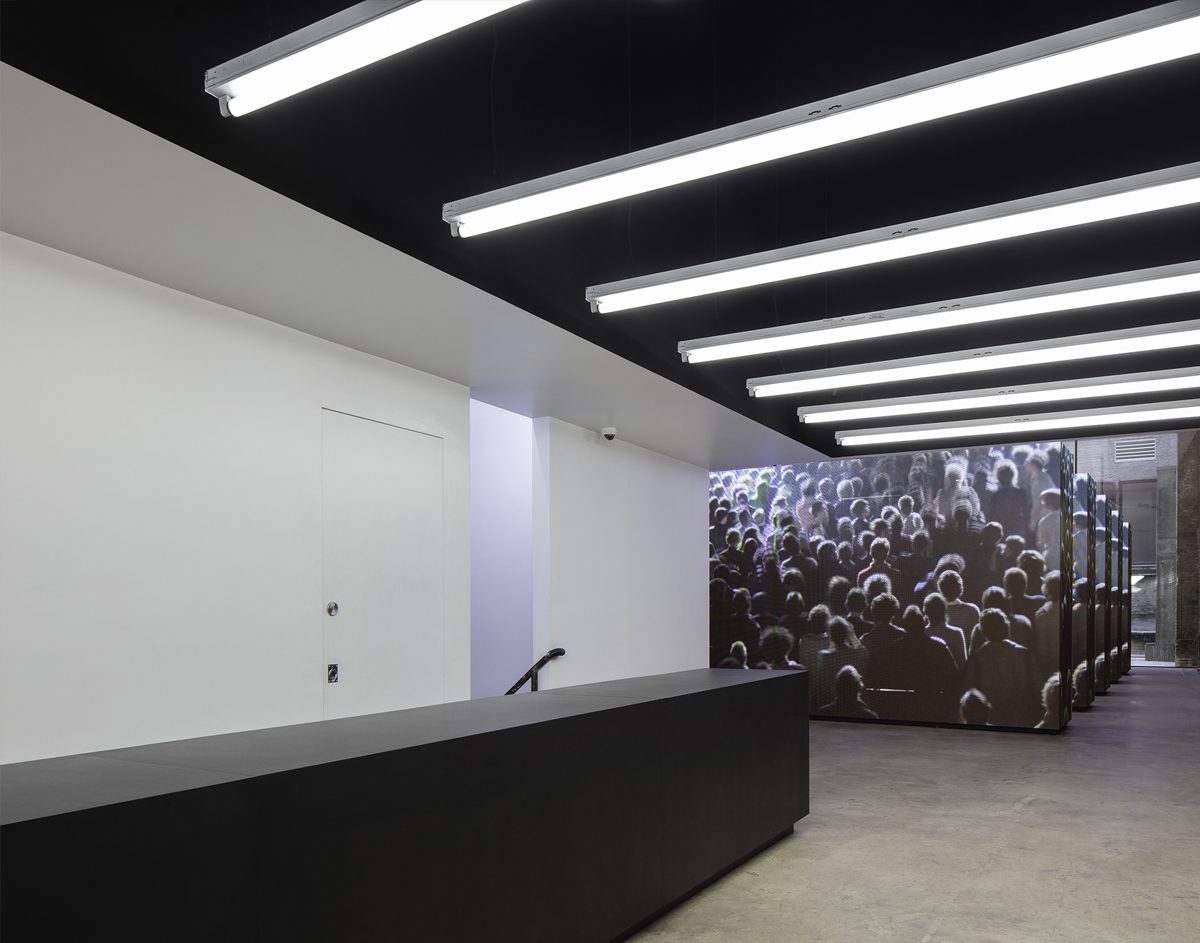
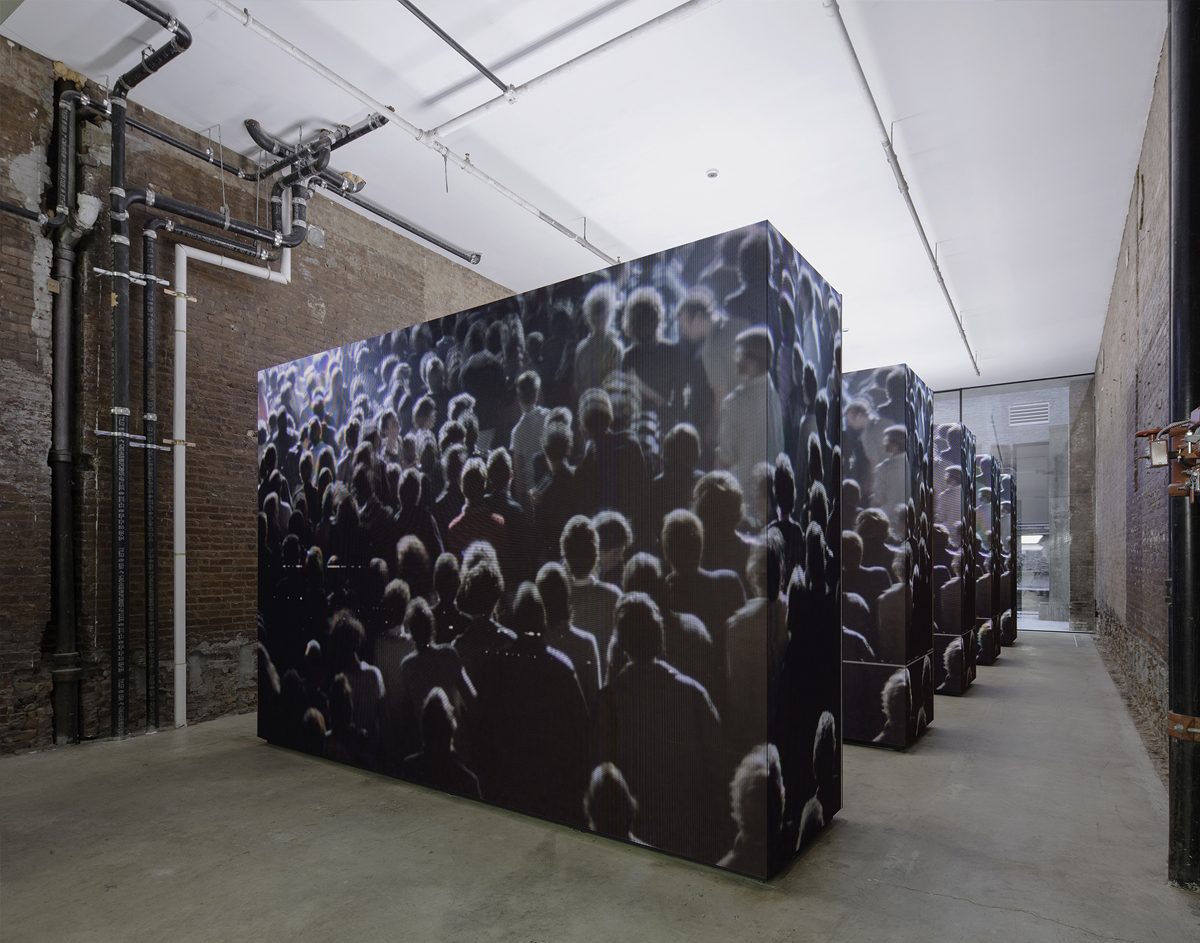

Illuminated with fluorescent tube lights, the exposed brick walls and concrete flooring of the 1800 sq ft (167 sq m) space is contrasted with five modular rack installations that are described by Leong Leong as being a monolith. Clad with LED screens, the slightly angled racks display videos that are played on a loop.

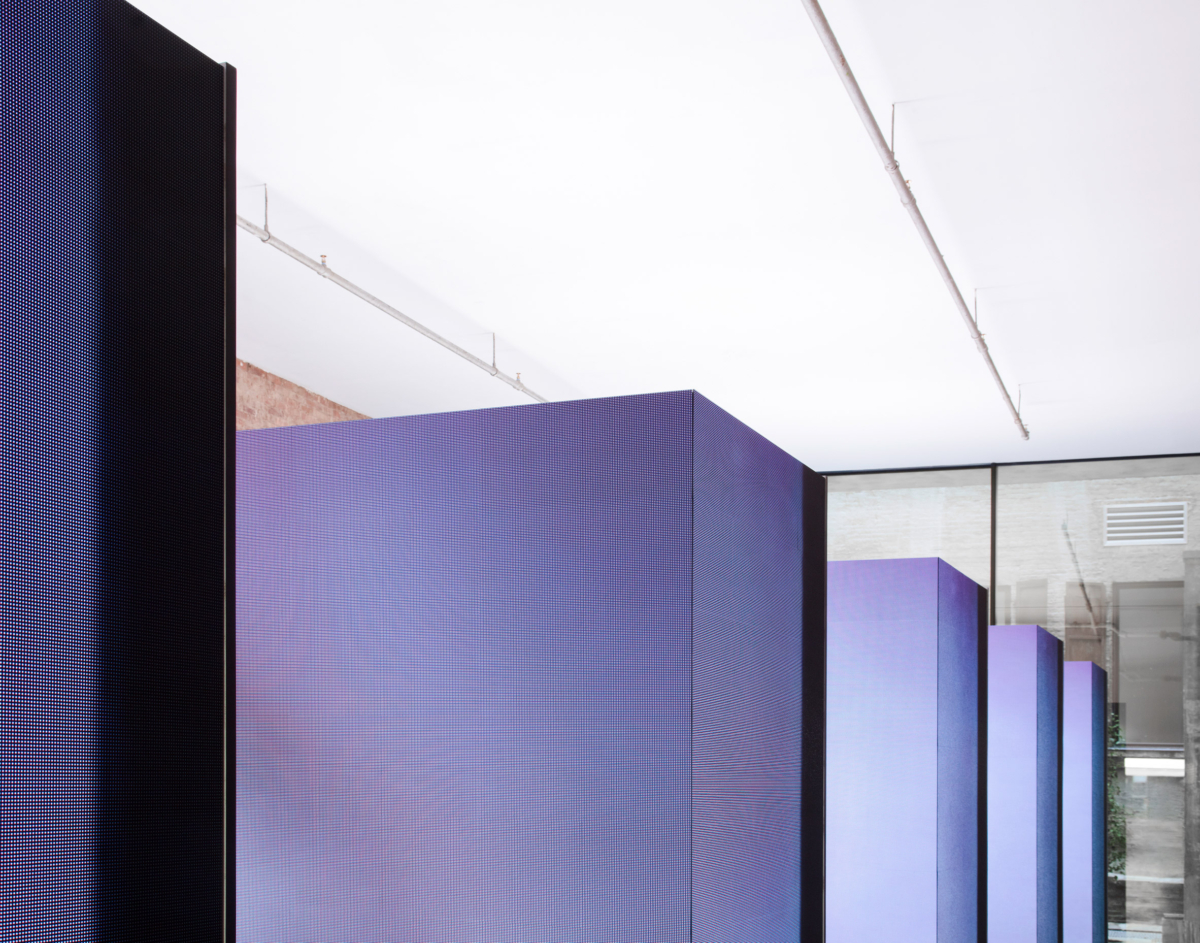
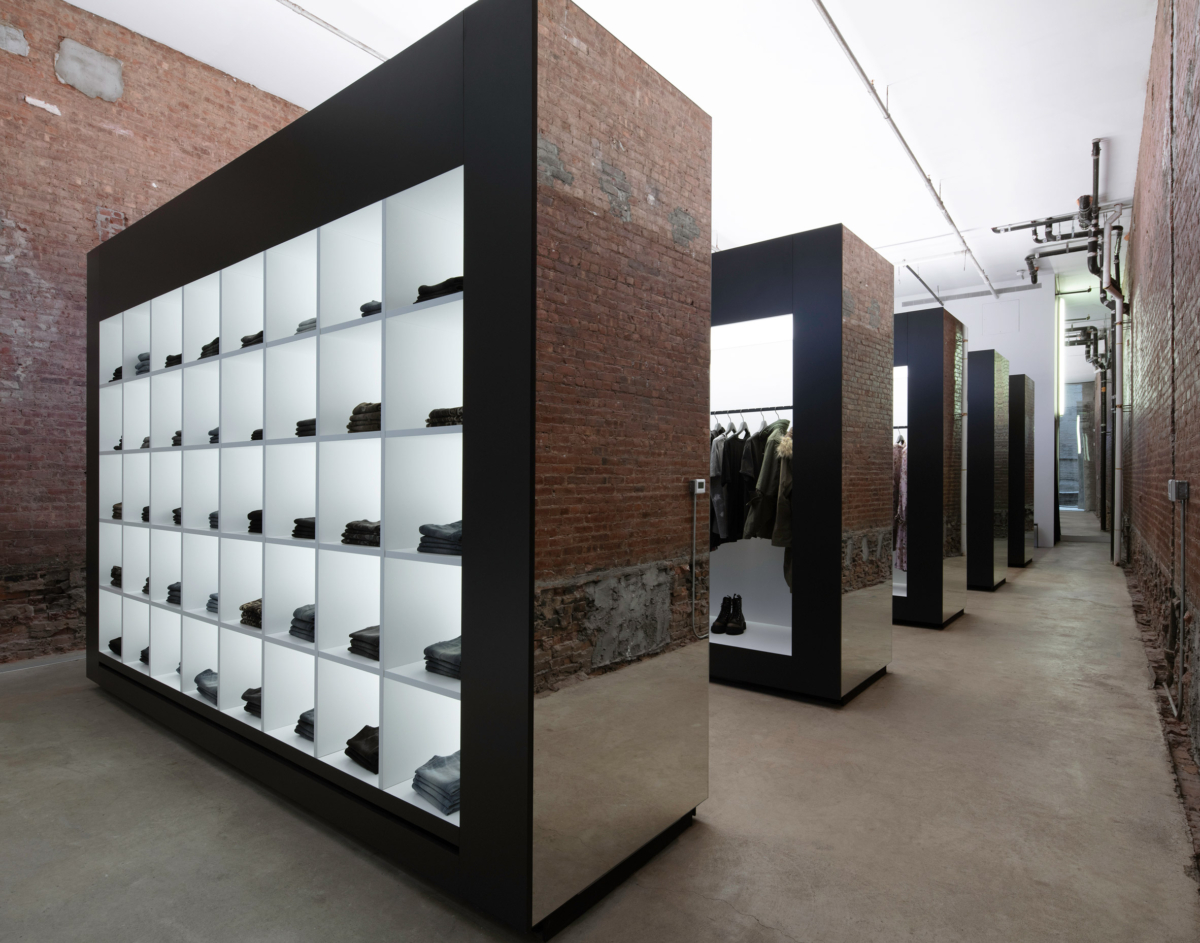
The racks also illuminate clothing and products with a diffused light. In addition, every rack includes a full-surface mirror.
“The monoliths are viewed as a series as one moves through the space, creating a sense of friction between the new and the old,” said Leong Leong.
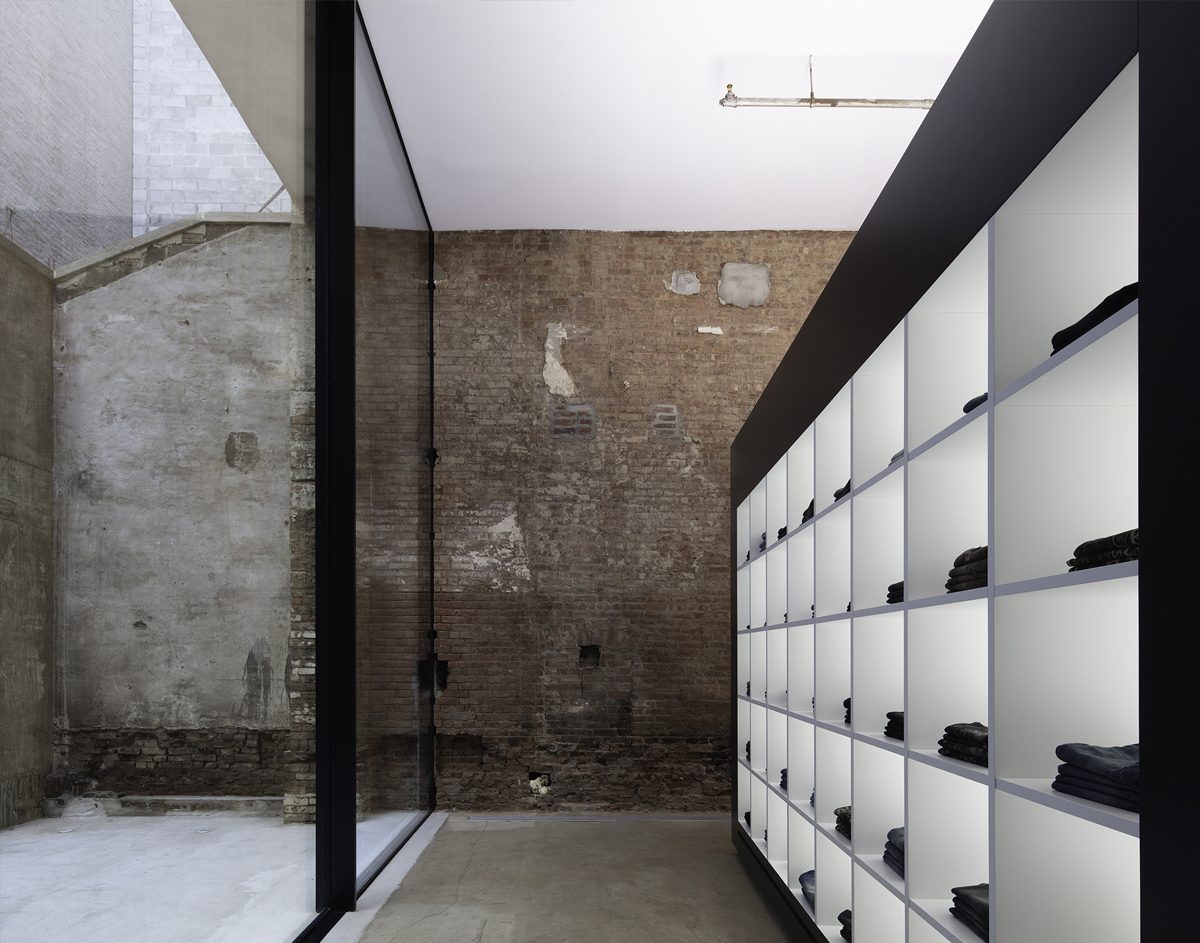
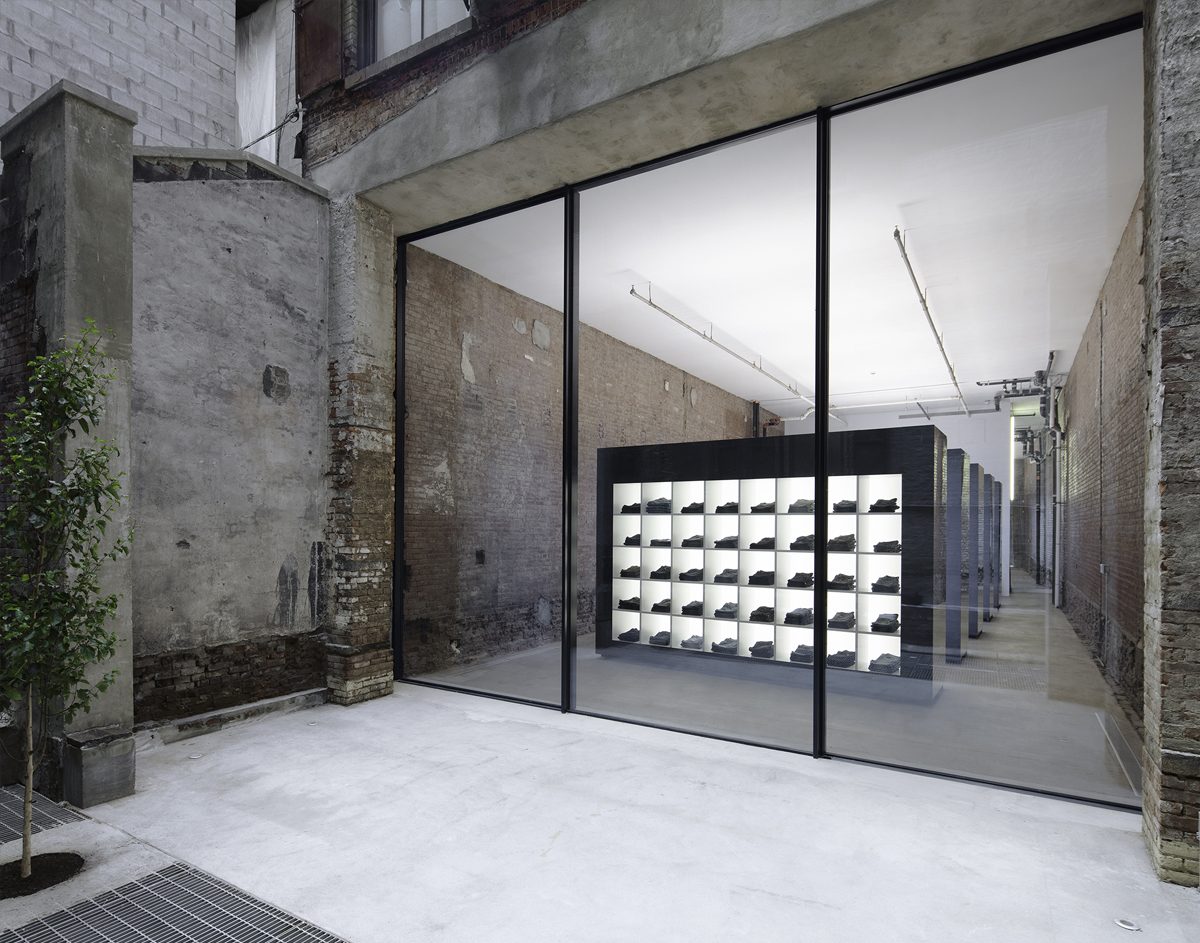
At the back of the store, there is a large sliding glass door that opens to a back patio.
“I think this corner can really become a destination,” added Leba. “It’s one of those rare streets in New York that is very small and it just sort of ends. But there are cool kids hanging out around here. It’s sort of like a piazza in a way.”





